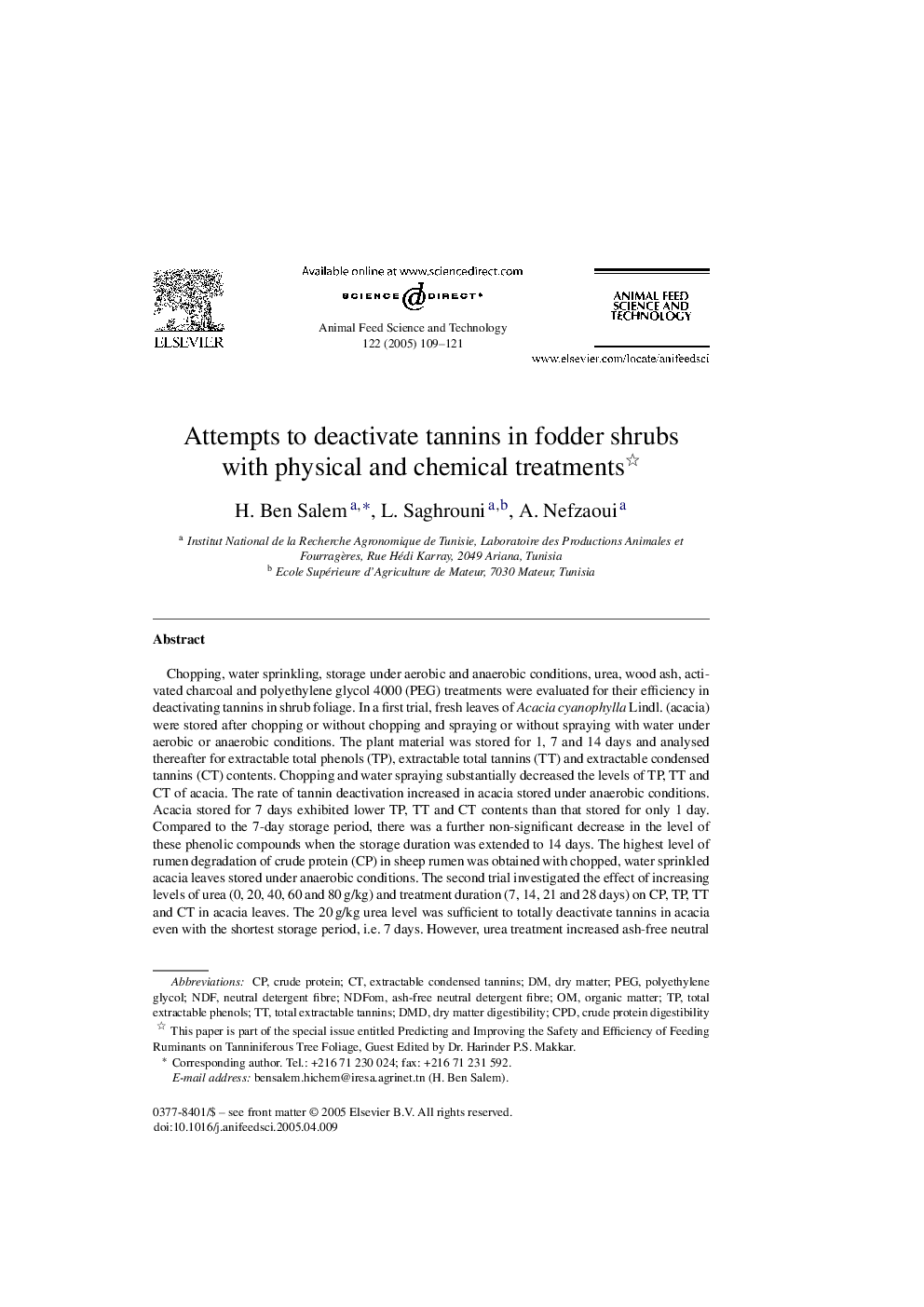| کد مقاله | کد نشریه | سال انتشار | مقاله انگلیسی | نسخه تمام متن |
|---|---|---|---|---|
| 8973684 | 1552509 | 2005 | 13 صفحه PDF | دانلود رایگان |
عنوان انگلیسی مقاله ISI
Attempts to deactivate tannins in fodder shrubs with physical and chemical treatments
دانلود مقاله + سفارش ترجمه
دانلود مقاله ISI انگلیسی
رایگان برای ایرانیان
کلمات کلیدی
ash-free neutral detergent fibreNDFomNDFDMDtotal extractable phenolsextractable condensed tanninscpd - CPDNutritive value - ارزش تغذیه ایUrea - اوره Chopping - برش دادنWood ash - خاکستر چوبShrubs - درختچه هاStorage - ذخیره سازیActivated charcoal - زغال چوب فعالneutral detergent fibre - فیبر مواد شوینده خنثیorganic matter - ماده آلیdry matter - ماده خشکdry matter digestibility - هضم ماده خشک مادهCrude protein digestibility - هضم پروتئین خامcrude protein - پروتئین خامpolyethylene glycol - پلی اتیلن گلیکولPEG - پلیاتیلن گلیکول total extractable tannins - کل تانن های قابل استخراج
موضوعات مرتبط
علوم زیستی و بیوفناوری
علوم کشاورزی و بیولوژیک
علوم دامی و جانورشناسی
پیش نمایش صفحه اول مقاله

چکیده انگلیسی
Chopping, water sprinkling, storage under aerobic and anaerobic conditions, urea, wood ash, activated charcoal and polyethylene glycol 4000 (PEG) treatments were evaluated for their efficiency in deactivating tannins in shrub foliage. In a first trial, fresh leaves of Acacia cyanophylla Lindl. (acacia) were stored after chopping or without chopping and spraying or without spraying with water under aerobic or anaerobic conditions. The plant material was stored for 1, 7 and 14 days and analysed thereafter for extractable total phenols (TP), extractable total tannins (TT) and extractable condensed tannins (CT) contents. Chopping and water spraying substantially decreased the levels of TP, TT and CT of acacia. The rate of tannin deactivation increased in acacia stored under anaerobic conditions. Acacia stored for 7 days exhibited lower TP, TT and CT contents than that stored for only 1 day. Compared to the 7-day storage period, there was a further non-significant decrease in the level of these phenolic compounds when the storage duration was extended to 14 days. The highest level of rumen degradation of crude protein (CP) in sheep rumen was obtained with chopped, water sprinkled acacia leaves stored under anaerobic conditions. The second trial investigated the effect of increasing levels of urea (0, 20, 40, 60 and 80 g/kg) and treatment duration (7, 14, 21 and 28 days) on CP, TP, TT and CT in acacia leaves. The 20 g/kg urea level was sufficient to totally deactivate tannins in acacia even with the shortest storage period, i.e. 7 days. However, urea treatment increased ash-free neutral detergent fibre content and did not improve in sacco acacia degradation. In the third trial air-dried 1 mm ground samples of acacia and kermes oak (Quercus coccifera L.) leaves were added to water (control), acacia wood ash, activated charcoal or PEG solutions (100 g/kg) at 1:10 (w/v) and shaken for 20 min. All these four treatments decreased TP, TT and CT contents and could be classified on the basis of their deactivation rate as wood ash = PEG > activated charcoal = water. In conclusion, the physical techniques tested in this study were found to be efficient in decreasing phenolic compounds in acacia leaves. The ideal treatment would be to spray water on the chopped leaves, which thereafter should be stored in sealed bags for at least 7 days. Although urea treatment deactivated these secondary compounds totally, it did not improve the nutritive value of acacia. Wood ash treatment seems to be a promising technique to deactivate tannins in shrub foliage and further studies on this inexpensive and locally available product should be encouraged.
ناشر
Database: Elsevier - ScienceDirect (ساینس دایرکت)
Journal: Animal Feed Science and Technology - Volume 122, Issues 1â2, 19 August 2005, Pages 109-121
Journal: Animal Feed Science and Technology - Volume 122, Issues 1â2, 19 August 2005, Pages 109-121
نویسندگان
H. Ben Salem, L. Saghrouni, A. Nefzaoui,